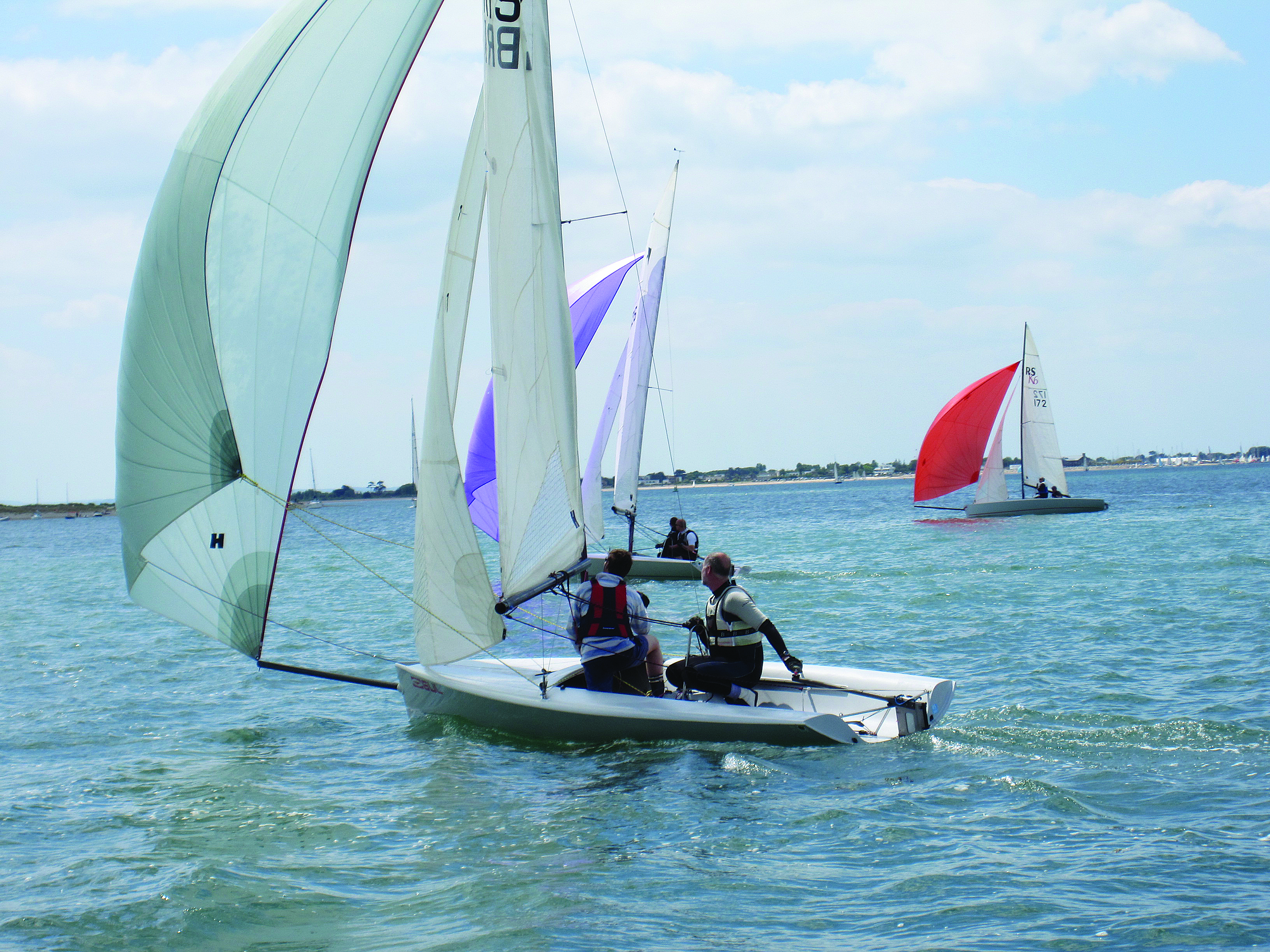Boatspeed In Asymmetrics
Book Extract
Use The Force (In The Rudder)
One of the best indicators in any boat is what you feel through the rudder. It should feel balanced. When the kite is oversheeted, you can feel the lee helm in the rudder. Ease the sheet to the point of the gennaker luff curling, and you’ll feel the rudder becoming more balanced.
Experiment with different mainsail trim and see what effect it has on the rudder. Ease the main and you should feel the lee helm increase. Tighten the main and you’ll feel the lee helm disappear again. This is why you see asymmetrics sailing around with the mainsail on or near the centreline downwind, because it’s helping bring the rudder into balance.
The rudder is your best feedback tool on the boat.
Which Mode Should I Be In?
There is a big difference between ‘soaking’ and ‘planing’. It’s hard to set some general rules for every kind of asymmetric boat, but let’s look again at the basic principles.
In something like an RS400 you are being blown along by the breeze up to about 10 or 12 knots of true wind. This means that if you are on a run, you want to aim deep downwind with the bowsprit pulled well back (the RS400 has a swinging bowsprit), as heading up will not give you enough extra speed to justify the extra distance you will sail.
This situation changes dramatically at 10 or 12 knots however, in so-called marginal planning conditions. At this point, it can pay to luff up 10 or 20 degrees towards the wind to promote planing.
Look around you in a race in marginal planning conditions, and you will see that there are many different angles and techniques for getting downwind at almost exactly the same speed. Some techniques are more appropriate than others at different points in a race, depending on the tactical situation you are in.
In light airs, when planing is off the agenda, in some asymmetrics it can pay to ease the tack line a few inches, heel the boat over to windward and swing the gennaker to windward and away from behind the other sails. Now you are turning the gennaker into more of a conventional spinnaker. I can’t tell you it will work in all boats, but it certainly works in some, for example the RS Feva.
It pays to experiment and try lots of different ways of sailing downwind, because there is often no single right answer. Get comfortable with sailing high and fast, and low and slow because they are both important skills to have in your armoury.
For the rest of this chapter, we hand over to our experts who provide their own class-specific input as to what makes their kind of asymmetric boat go fast. Some of it you may find contradictory. Not all experts agree, for example, on whether or not to raise the daggerboard / centreboard downwind. So don’t take their word as gospel. Use their tips as inspiration to do your own experimenting and find out what works for you and your type of boat. Determine your mode by whether you are being driven mainly by true wind or apparent wind.
EXPERT ADVICE
Paul Brotherton: Determining Your Mode
Top 49er sailor and Olympic coach, Paul Brotherton, has an interesting way of determining which mode you should be in.
“The important thing to understand with asymmetric rigs is when you are being blown along by the wind and when you are sailing under apparent wind. The crossover is quite stark and calls for different techniques. One of the best ways to tell whether you are apparent wind sailing or being blown by the real wind is to pull the mainsail in. If there is an immediate and large effect, then you are apparent wind sailing. If not, then you are being blown by the breeze”.

Determine your mode by whether you are being driven mainly by true wind or apparent wind

The helmsman can feel how the boat is going through the feedback from the tiller
© Not to be reproduced without written permission from Fernhurst Books Limited.
The Asymmetric Dinghy Book is written by Andy Rice. Andy is a championship winning dinghy sailor. A spell in the British Olympic Squad led him to sailing journalism – he now writes for a number of dinghy and yacht racing magazines including Seahorse, Yachts & Yachting, Yachting World and Sailing World. He is editor of the go-faster website SailJuice.com, aimed at sailors who want to improve their skills, and owner of Sailing Intelligence, a specialist media agency for the sailing and marine market.